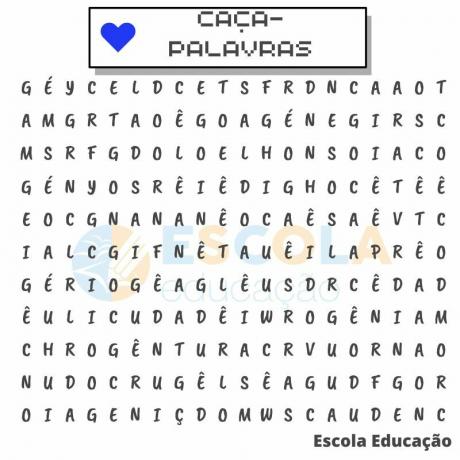Optical means that interact with light can be classified as transparent, opaque and translucent. Transparent media are those that allow the passage of light without it happening dispersal. Translucent media, in turn, are those that allow the passage of light, however, in an irregular way, so that we cannot see clearly through them. On the other hand, opaque media are those in which light cannot penetrate, only the reflection and light absorption.
transparent media
In simple terms, transparent media are those that light can traverse along a regular trajectory, without large variations in direction or significant loss of luminosity.
Transparent media have the same refractive index in all their contents, moreover, when passing through them, the rays of light do so in such a way that they are not dispersed. Another important feature of these media is that the light rays that pass through them obey the lawinSnell, shown below:

Snell's law relates media of different refractive indices by angles of incidence and refraction.
What is light scattering? THE dispersal it is a optical phenomenon characterized by the separation of light within optical media that are not perfectly transparent, but have "granules" (small crystal structures) of similar sizes to lengthinwave of the light that falls on their faces. Other factors, such as structural defects or irregularities in the positions of the atoms, can also make a medium less transparent.

You optical media are qualified as transparent according to the length of wave of the light that passes through them, an example of this is the glass, like those used in greenhouses: they allow the passage of visible light, but not that the infra-red escape to the outside. In this way, we say that these materials are transparent to visible light, but opaqueforthe infrared.
As said, the physical property that determines the transparency of an optical medium is the relationship between the sizes of crystal structures that compose it with the size of the length of the electromagnetic wave — if these sizes are of the same order of magnitude, light scattering will occur. Therefore, visible light, whose wavelengths are in the micron scale (10-6 m), will only pass through an optical medium without dispersion if the crystal structures of that medium are smaller than 10-6 m.
Lookalso:Understand why nuclear reactors emit light: the Cherenkov effect
At the microscopic level, the transparency of an optical medium is directly related to the levelsinenergy of yours electrons. If the difference between these energy levels is different from the energy that is carried by the photons of light, the light will not be absorbed, in other words, the optical medium in question will be transparent for that frequency of light.
Examples of transparent media
Let's check out some examples of transparent optical media:
Vacuum: Despite being characterized as a region where there is no presence of matter, it is possible to transfer energy through a vacuum, so we can consider it as a medium. In this sense, the vacuum is the only perfectly transparent medium;
Glass: Most glass has great transparency, since the particles that make it up are smaller than the wavelength of visible light;
Atmospheric air: Although transparent to most visible light, the atmospheric air it is not completely transparent to blue and violet, just like water. However, this effect is only observed when we look at a large extension of that medium, such as in a deep lake or when we look up and see the blue sky. The blue color of the sky is related to the dispersalfrom light by the molecules present there.
Lookalso:How fast is the light? Find out what is the speed of light in different media
translucent media
In a very simplified way, translucent media allow thestreaminggiveslight, however, with poor sharpness. Unlike transparent media, translucent media have different refractive indices inside. When light passes through them, its trajectory is irregular, so when we try to see some object positioned behind a translucent medium, we see a very distorted image.
Examples of translucent media
Check out some examples of translucent media:
Etched glass: allows partial passage of light. However, we cannot see in detail the objects behind it;
Plastic bag: it is crossed by light, but we cannot see objects behind it;
Parchment paper: it only allows us to see objects behind it when placed very close to the middle, thus reducing the scattering of light;
Fog: through it, you can see the light of a car's headlights, but it is not possible to clearly determine the vehicle's silhouette, for example.
See too:Have you ever wondered how black light works? Click and find out!
opaque media

the opaque media do not allow the transmission of light inside. When light hits the interface of an opaque medium, it can suffer regular or diffuse reflection, as occurs on the surfaces of a tree bark it is a mirror, respectively.
In the case of tree bark, there is no light transmission, but rather diffuse reflection: we cannot see ourselves when we look at its surface, despite seeing it. In the case of the mirror, there is no light transmission, but we can see our reflection, which is why we say that regular reflection occurred.
know more: Wave classification: nature, propagation direction and vibration direction
THE opacity of a medium refers to the distance that light must travel within a medium, the intensity of the light, the density of the medium and a property called coefficientinmitigationof pasta, with regard to how great the facility for light is to penetrate this medium.
Examples of Opaque Media

Let's check out some examples of opaque media:
wood: When we look at a piece of wood, it is not possible to see what is behind it, so we say that this medium is opaque to visible light;
Concrete: Similar to wood, concrete does not allow visible light to pass through, reflecting it irregularly and absorbing it;
Metals: When polished, the metals reflect light regularly and absorb it.
By M.e Rafael Helerbrock
Physics teacher
Source: Brazil School - https://brasilescola.uol.com.br/fisica/transparentes-translucidos-opacos.htm

